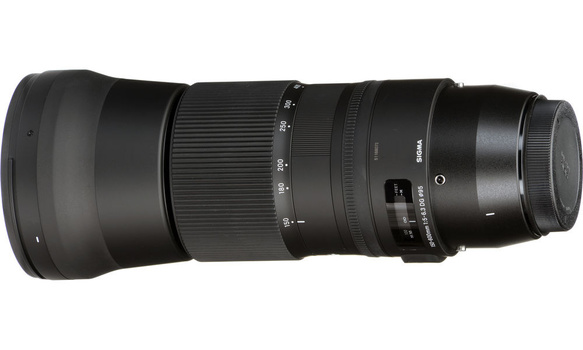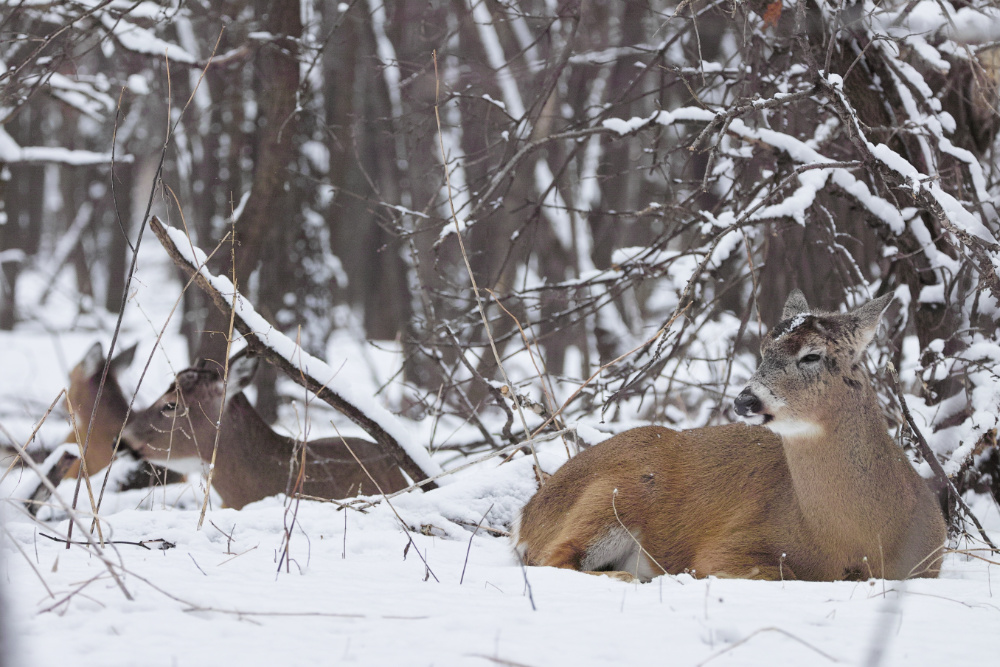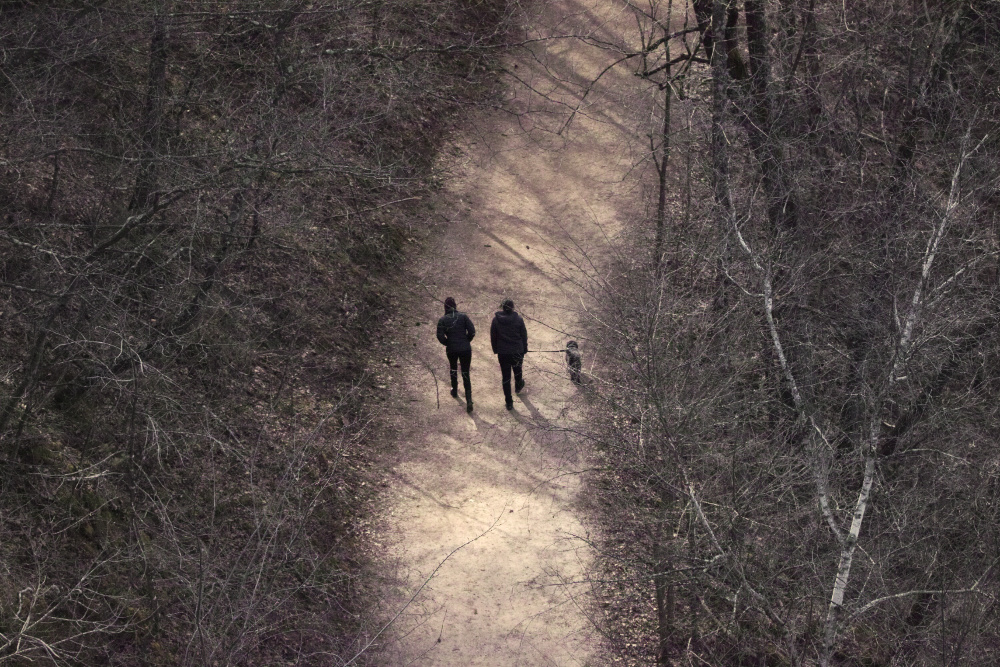Super-telephoto lenses are essential to the craft of sports and wildlife photographers who are shooting great distances away from their subjects, as well as to other creative photographers looking to flatten or fill the frame to create unique images. Enter the Sigma 150-600mm f/5-6.3 DG OS HSM Contemporary which is a full-frame super-telephoto lens priced just under $1,000 and comes in Nikon F, Canon EF, and Sigma SA mounts.
Build
The Sigma 150-600mm Contemporary lens is a super-telephoto zoom that utilizes a Thermally Stable Composite in its barrel construction, much like other Sigma Global Vision lenses. This matte black plastic has metal-like qualities in its thermal shrinkage and firmness, as the name suggests. I really enjoyed the tactile feel of this lens, and nothing about it felt cheap or easily breakable.
Only the mount of the lens is fitted with dust and splash proof gasket seal. Because many users of super-telephoto lenses are generally outdoor shooters, it would be great if the weather seals had more presence in the barrel construction. Both front and rear lens elements do have a water and oil repellent coating. The lens comes with a lightweight plastic bayonet-style lens hood and tripod collar ring which is completely removable. The lens can take 95mm filter accessories.
The outside of the lens features a generously-sized rubber zoom ring with a ribbed texture. The zoom ring rotates 146 degrees in going from 150mm to 600mm. This Sigma lens also allows for push/pull zooming by use of the grippy flared design near the front. In practice, pulling the zoom back in is easiest if you just grab the lens hood, but that's not exactly an ideal method.
Compared to the zoom ring, the focus ring is much smaller and harder to find with your eye pressed into the viewfinder. However, the performance is really wonderful in allowing for quick and smooth transitions over a wide focus change while still being resistant enough for subtle fine tuning.
There are a number of different toggle switches along the barrel including focus mode control, a focus limiter, optical stabilization control, and custom function control. Being such a weighty telephoto, there's also a zoom lock switch to prevent unwanted zoom creep. The zoom can be locked into any of the eight labeled focal length indication stampings on the lens.
Inside the 150-600mm Contemporary you'll find a total of 20 elements in 14 groups. There's one FLD element (a fluorite-like low dispersion glass for sharpness) and three SLD (special low dispersion glass for clarity and contrast) elements. The lens features nine rounded aperture blades.
Overall, at its most compact the super-telephoto lens measures in at 4.1 inches wide and 10.2 inches long. Adding on the lens hood brings it out to 13 and a half inches, and then with the hood on and zooming to 600mm brings the maximum extended length to over 16 and a half inches. The lens weighs 4.3 pounds with much of the weight near the front.
As a variable f-stop lens, it may interest you to know the breakdown of where these limits take place. From 150-179mm the lens shoots wide open at f/5, from 180-387mm the lens closes to f/5.6, and onwards from 380-600mm it will be limited to f/6.3 as its maximum aperture. The minimum aperture is f/22 throughout.
Sharpness
Just a note before I talk about sharpness, I only used this lens mounted to the crop-sensor Sigma sd Quattro. In images from a full-frame camera, and with just about any lens, you can expect sharpness to fall off more in the corners due to showing the lens' full image circle. The framing in a crop sensor image is more concentrated on the sharpest spot at the center of the lens.
With that, what I found is the sharpness of this lens is highly acceptable coming from a price tag just under $1,000. Working with this lens at a variety of focal lengths showed strong results nearly across the board from center to edge. The typical photographer using this lens is probably going to be shooting wide open much of the time to get all the light and speed as the f/5-6.3 aperture will allow, and the good news is that there won’t be any real-world downsides in doing so. Yes, stopping down a bit is going to give you the sharpest results the lens is capable of, but realistically you aren’t ruining any images by letting it fly wide open. If you’re mounting this to a new Canon or Nikon, or even Sony via adapter, this is a great time to benefit from the much reduced noise coming from higher ISO images these days. Shooting at the far end of its focal capabilities will result in a more significant drop in image quality, but you only really notice this if you are pixel peeping photos side by side.
If you’re looking to stop the lens down, I’d use caution when approaching f/16 and beyond to avoid diffraction muddying up image quality — but this is true for every lens you’d mount. Also before reality hits and this lens is shipped and sitting in front of you, realize now that it is a big four pound 600mm (900mm APS-C) super-telephoto lens; you’re going to want a quality tripod or monopod if you are lowering the shutter speed and raising the lens to shoot for an extended amount of time. No amount of optical stabilization is going to help you when your arms feel like falling off from holding this lens up for the duration of a shoot.
Autofocus
The lens has a Hyper Sonic Motor (HSM) AF system which is a fancy way of saying its quiet and fast. The focus limiter switch on the lens can be toggled between full range, 10 meters to infinity, or 2.8 meters to 10 meters. Another switch can be flipped to toggle between AF, MO (a manual focus override setting for shooting autofocus while retaining some manual adjustment ability), and MF. The 150-600mm Contemporary lens is compatible with the Sigma USB Dock so fine-tuning the accuracy is possible. I didn't have one of these docks, but my copy didn't seem to have any glaring issues with nailing focus in a sterile environment (in the real world, the Sigma sd Quattro tried its best to ruin every shot).
In the dead of winter, things get really quiet in the woods. It's those times that really makes or breaks a quiet autofocus. When I was photographing a doe and yearling making their way through the trees at Banning State Park in Minnesota, activating autofocus was enough to give a little startle each time. However, it wasn't enough to make them run off, so you can decide whether that is a success or not. On the other hand, the freshly shedded bucks inside Fort Snelling State Park didn't care whatsoever about my presence or the noise.
Vignetting, Distortion, Chromatic Aberration
These days, vignetting, distortion, and chromatic aberration are literally one-click fixes when working with the raw files in post. However, it's still interesting to examine the straight-out-of-camera results as they can indicate the level of quality in design and materials a company placed into the creation of the lens when compared among its competition.
The vignetting from shooting this lens on a APS-C sensor at 150mm (225mm equivalent) wide open, where it would be most apparent, is barely there — emphasis on barely. This was only noticed when shooting an almost white-out snow scene. Anything else you aren't going to see it. From looking around the Internet, full-frame camera owners can probably expect around a one to two stop difference at the corners at 150mm and easing up the more you zoom. This is so easily fixable in post-processing as already mentioned, and stopping down the aperture a little will also remedy it in camera.
Again, with an APS-C camera body, distortion with this super-telephoto is not seen. Full-frame cameras will likely have a little bit of pin cushion distortion, but I wouldn't expect enough to cause a hit to image quality when adjusted in post-processing.
The chromatic aberration is strongest at 600mm, but even still it's well controlled even in high-contrast edges in the far corners. At 150mm the cyan and purple fringing is close to the same but slightly reduced, and in the 300-380mm range it's essentialy nonexistent.
What I Liked
- Solid sharpness.
- Optical Stabilization works great and really comes in handy for a lens with this focal length.
- Price is very reasonable for a super-telephoto.
- Turning the focus ring and zoom ring has the right amount of smoothness.
- Tripod collar is removable.
What I Didn't Like
- Front heavy and you'll probably want to use a tripod plate that extends much further than the lens' tripod collar to balance properly on sticks.
- The focus ring is hard to find by just feeling around with your hands.
- Only weather resistant at the mount.
Overall, I would not expect a lens like the Sigma 150-600mm Contemporary to cost as little as $989. It's a lot of lens and it captured solid images. Not to be ignored, Sigma also has a big brother to this lens which features an aluminum alloy barrel, more elements in more groups, and better weather sealing. However it costs twice as much, and for many of us at that price it can't even be considered as an option. I haven't used the Sports version, but I can't imagine any hobbyist photographer using the Contemporary lens wishing they would have dropped double the money for the upgrade.

















Great review. I picked this lens up for the Olympics trying to save some weight. I was very happy with its performance and would recommend it to anyone even if it was much more expensive. Definitely another great lens from Sigma. If it wasnt for the cost I'd probably own a few more Sigma lenses.
"I only used this lens mounted to the crop-sensor Sigma sd Quattro..."
So this is a great review for Quattro owners...
For their sake I hope there are less than 10 of them. Awesome lens, I just wish I could have shot it off a different camera!
I am very happy with the Tamron equivalent of this lens on a Nikon D800 when stopped down to f/8, where it is noticeably sharper than wide open. Focusing is quite fast when it is already almost focused, but it can hunt a lot if not. I find myself manually focusing most of the way, then using autofocus to get it dead on. Great value lens for some excellent results.
I love this lens. I've found the sharpness falls off when fully extended to 600mm, but at 580mm and below, I have no complaints about it. I've used it to shoot wildlife, landscapes and even the rings of Saturn (seriously). At around $1,000, it's a super value.
Below is a shot of last fall's Harvest Moon taken with this lens mounted to a Canon 70D on a Manfrotto tripod.
So i have a canon T6 and with it being a APS-C camera body. Is there a big difference when its 225-900mm. Just wondering if thats a good thing or bad thing.